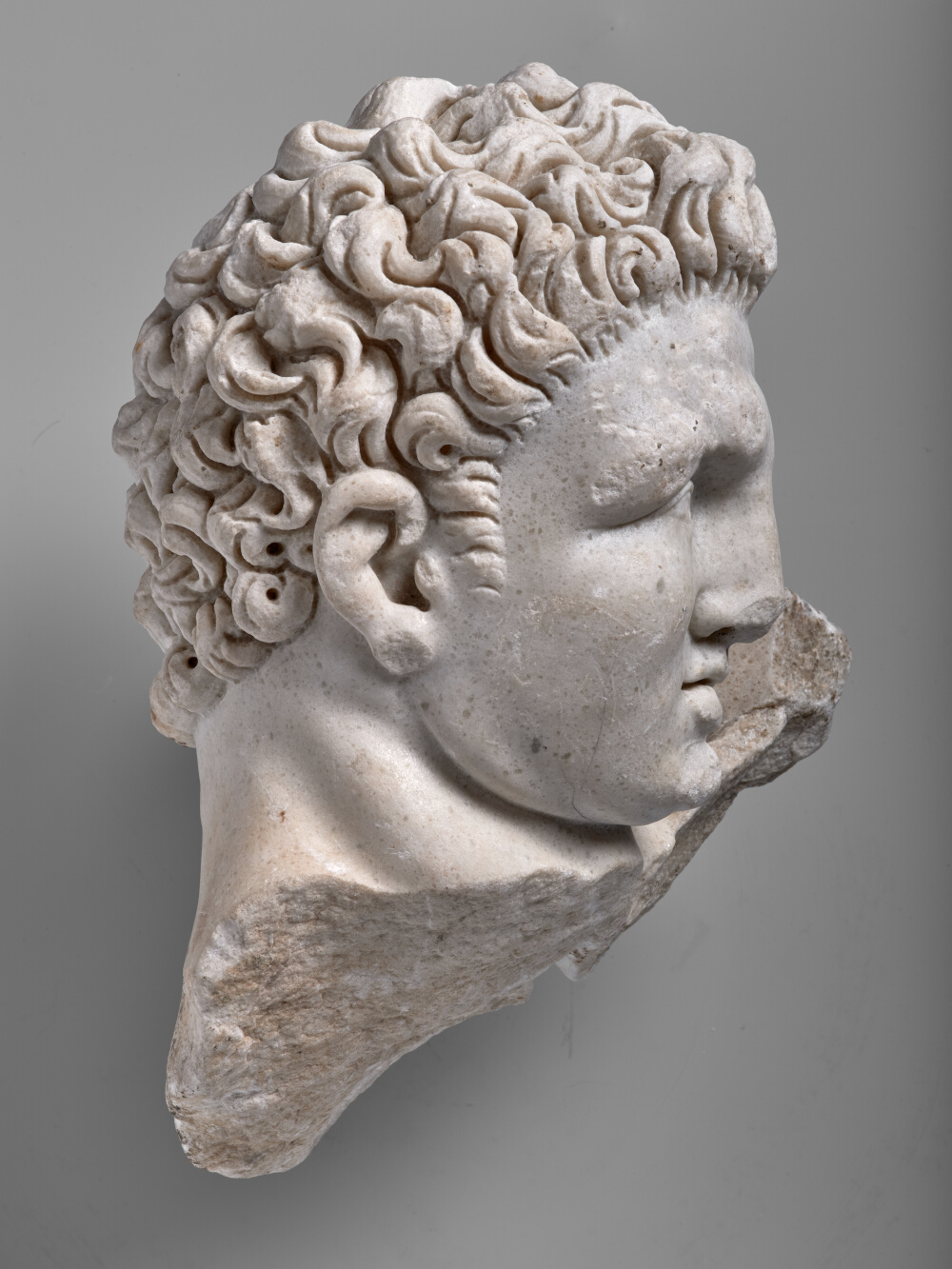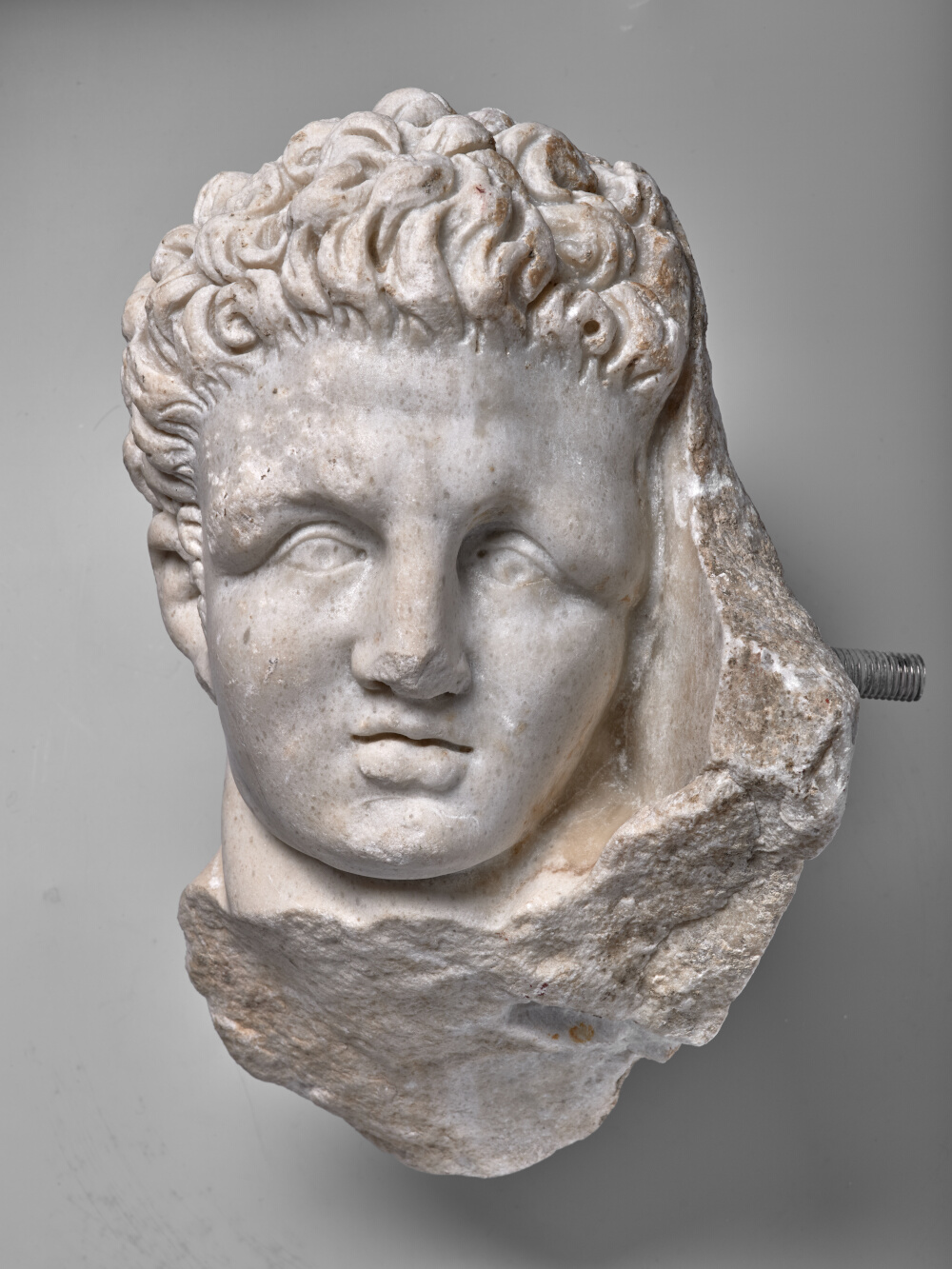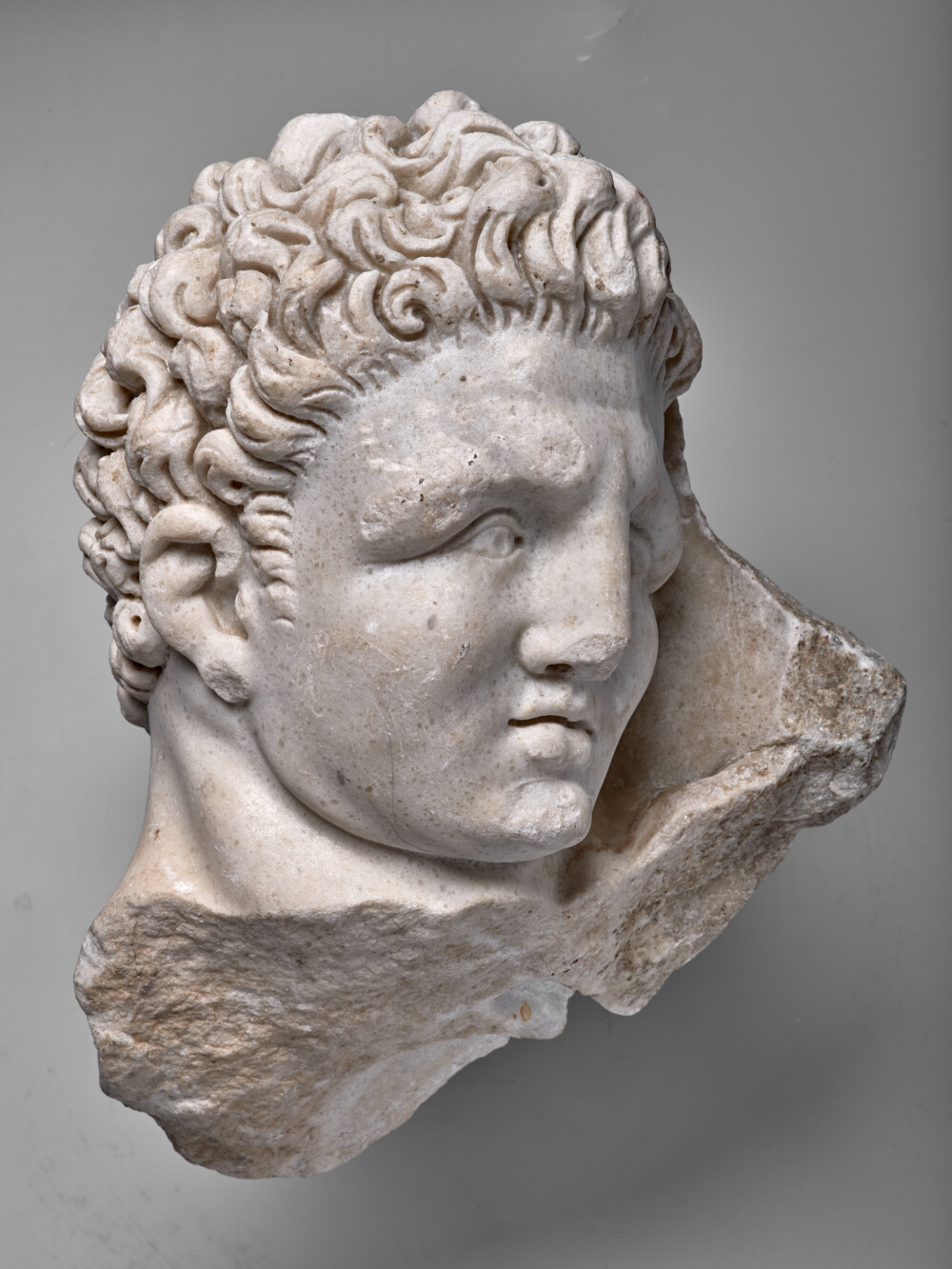Naked head of Hercules



- Date de création
- End of the 3rd century
- Material
- Saint-Béat marble (Haute-Garonne)
- Dimensions
- H. 31 x l. 22 x P. 20 (cm)
- Inventory number
- Ra 28 a
- Photo credits
- Daniel Martin
This juvenile head was undoubtedly part of the cycle of the Labours of Hercules. It is most probably the first of them, that is the slaying of the Nemean lion in the Peloponnese D. Cazes et al., Le Musée Saint-Raymond : musée des Antiques de Toulouse, Toulouse-Paris, 1999, p. 86.. Because the lion’s fur was impervious to weapons, Hercules was obliged to strangle it, then use the beast’s own claws to skin it. This lion’s pelt became an armour that was to protect him in the future.
Thus, Hercules’s hairless face and the absence of the lion’s fur that he used to cover his head and was obliged to wear in all subsequent Labours are so many clues towards identifying the hero’s ordeal, which took the form of an initiation test. There are similar stories to the myth of the hero fighting the lion in the most ancient civilisations, namely in the Near East with the legendary tale of King Gilgamesh. The lion represented all the forces of nature that only a hero, in other words a being embodying human supremacy, could oppose before dominating them. This can be compared to the precepts of an aristocratic Greek-style education (paideia), in which fighting against a fantastic being, or one reputed to be invulnerable, allows the victor to rise above the others and move on to a higher level of action C.P. Presicce, « Eracle e il leone: paradeigma andreias (Pl. XVIII-XXV), » C. Bonnet, C. Jourdain-Annequin, V. Pirenne-Delforge (eds.), Le Bestiaire d’Héraclès : IIIe Rencontre héracléenne (Kernos suppléments), Liège, 2013, pp. 141–150, pp. 141-142.. Hercules, who was still young, was therefore allowed to pursue his highly heroic rather than valiant mission.
P. Capus
Bibliography
- Cazes et al. 1999 D. Cazes, E. Ugaglia, V. Geneviève, L. Mouysset, J.-C. Arramond, Q. Cazes, Le Musée Saint-Raymond : musée des Antiques de Toulouse, Toulouse-Paris. p. 86
- Du Mège 1835 A. Du Mège, Description du musée des Antiques de Toulouse, Toulouse. no 176
- Du Mège 1828 A. Du Mège, Notice des monumens antiques et des objets de sculpture moderne conservés dans le musée de Toulouse, Toulouse. no 84
- Espérandieu 1908 É. Espérandieu, Recueil général des bas-reliefs de la Gaule romaine, 2. Aquitaine, Paris. p. 36, no 899, fig. 2
- Joulin 1901 L. Joulin, Les établissements gallo-romains de la plaine de Martres-Tolosane, Paris. fig. 111 b
- Massendari 2006 J. Massendari, La Haute-Garonne : hormis le Comminges et Toulouse 31/1 (Carte archéologique de la Gaule), Paris. p. 250, fig. 120
- Rachou 1912 H. Rachou, Catalogue des collections de sculpture et d’épigraphie du musée de Toulouse, Toulouse. no 28 a
To cite this notice
Capus P., "Naked head of Hercules", in The sculptures of the roman villa of Chiragan, Toulouse, 2019, online <https://villachiragan.saintraymond.toulouse.fr/en/ark:/87276/a_ra_28_a>.